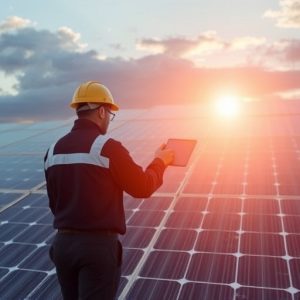Photovoltaic (PV) technology has revolutionized solar energy by directly converting sunlight into electricity using semiconducting materials like silicon cells, achieving high efficiency across various applications from rooftop installations to large-scale power plants. With significant advancements over the years, modern PV panels offer improved durability and accessibility, making Solar Energy a viable, sustainable option to reduce carbon footprints and promote greener futures. Key implementation considerations include site assessment for optimal sunlight, regulatory compliance, cost analysis, and tailored system design for reliable renewable energy generation.
“Unleashing the power of the sun, Photovoltaic (PV) technology emerges as a pivotal innovation in the realm of renewable energy. This article delves into the fundamentals of PV systems, elucidating how they harness sunlight to generate electricity efficiently. From the basic workings of PV cells to their diverse applications and remarkable benefits, we explore the current landscape and future potential of solar energy. Additionally, key considerations for implementing PV systems are highlighted, offering a comprehensive guide for those interested in harnessing the sun’s power.”
- Understanding Photovoltaic (PV) Technology: A Basic Overview
- How PV Cells Convert Sunlight into Electricity
- Benefits and Applications of Solar Energy Using PV Technology
- The Evolution and Future Prospects of PV Technology
- Key Considerations for Implementing PV Systems
Understanding Photovoltaic (PV) Technology: A Basic Overview
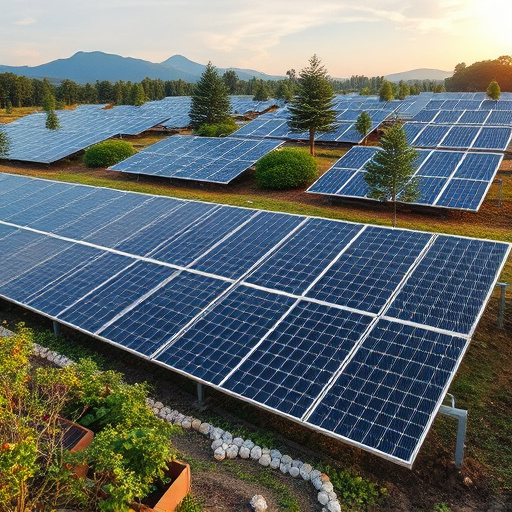
Photovoltaic (PV) technology harnesses the power of sunlight to generate electricity, marking a significant step in the realm of renewable energy. At its core, PV systems convert solar radiation into direct current (DC) electricity through the use of semiconductor materials, commonly silicon-based cells. These cells are arranged in modules that make up a photovoltaic panel or array. When sunlight hits these panels, it excites electrons within the material, creating a flow of electric charge—a process known as the photovoltaic effect.
This technology has revolutionized the way we harness solar energy, offering a clean and sustainable alternative to fossil fuels. PV systems are versatile, ranging from small-scale installations on rooftops or in remote areas to large-scale utility-grade power plants. The efficiency of these cells has improved steadily over the years, making solar power a increasingly viable option for reducing our carbon footprint and promoting a greener future.
How PV Cells Convert Sunlight into Electricity
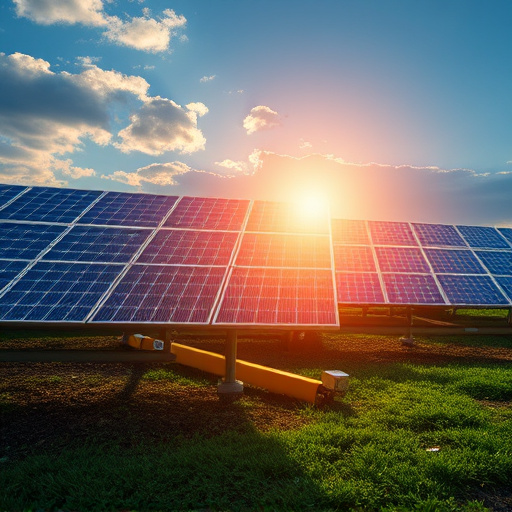
Solar energy is harnessed through photovoltaic (PV) cells, which have revolutionized the way we tap into clean and renewable power sources. These cells are designed to convert sunlight directly into electricity, making them a key component in the global transition towards sustainable energy practices. The process begins when photons from sunlight strike the cell’s surface; this triggers an electrical field within the cell, creating a flow of electrons that generate direct current (DC) electricity.
The PV cell is typically composed of semiconducting materials, such as silicon, treated with various impurities to create a p-n junction. This junction allows for the efficient separation of electrons from their atoms when exposed to sunlight, resulting in a usable electric current. The DC electricity produced by these cells can then be converted into alternating current (AC) through inverters, making it compatible with standard power grids and easily utilizable in homes, businesses, and various industrial applications.
Benefits and Applications of Solar Energy Using PV Technology
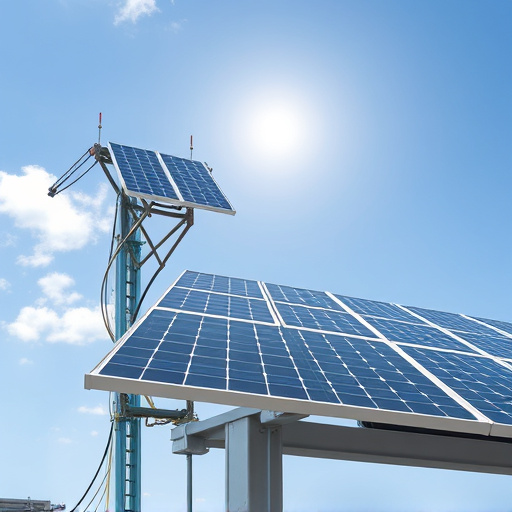
Solar energy, harnessed through photovoltaic (PV) technology, offers a plethora of benefits and applications across various sectors. One of its most significant advantages is its abundance; sunlight is easily accessible and free, making it an environmentally friendly and sustainable energy source. PV panels convert this renewable resource into electricity, providing a clean alternative to fossil fuels. This technology has gained traction globally as countries strive for energy independence and reduce their carbon footprint.
The versatility of solar energy is another key factor. It can power both residential and commercial buildings, with rooftop installations being a popular choice due to their discreteness. On a larger scale, solar farms generate electricity for entire communities, contributing to the grid’s stability. Additionally, portable solar panels cater to off-grid locations, such as remote villages or outdoor events, ensuring access to reliable energy. This technology’s low maintenance and longevity make it an attractive option, further encouraging its adoption in the pursuit of a greener future.
The Evolution and Future Prospects of PV Technology
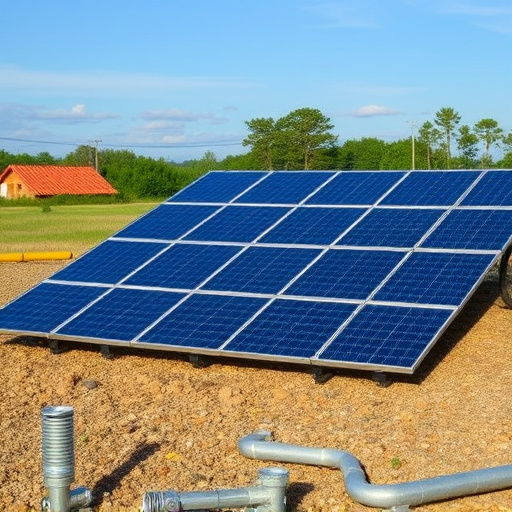
The evolution of Photovoltaic (PV) technology has been a remarkable journey, transforming the way we harness solar energy. From its early beginnings in the 1800s, where scientists first observed the direct conversion of sunlight into electricity, to the advanced materials and designs of today, PV technology has come a long way. Early solar cells were inefficient and cost-prohibitive, but continuous research and development have led to significant improvements. Modern PV panels are more efficient, durable, and accessible, making solar energy a viable option for homes, businesses, and even large-scale power generation.
Looking ahead, the future of PV technology promises exciting possibilities. Advancements in materials science, such as perovskite solar cells and new types of semiconductors, could further boost efficiency and reduce costs. Integration of smart grids and storage solutions will enhance the stability and reliability of solar energy systems. As global efforts to combat climate change intensify, PV technology is poised to play a pivotal role in the transition to renewable energy sources, offering a sustainable and clean alternative to fossil fuels and contributing to a greener future for all.
Key Considerations for Implementing PV Systems
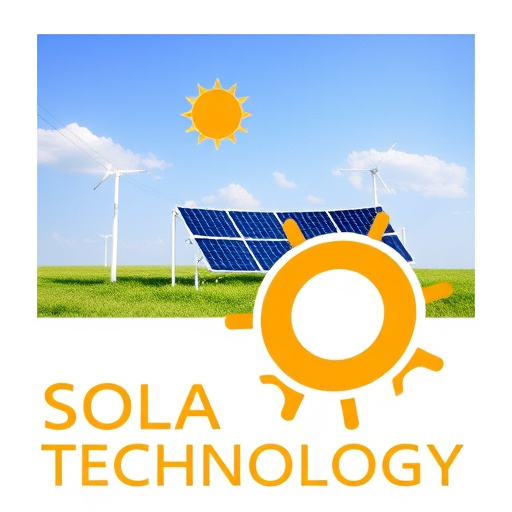
Implementing Photovoltaic (PV) systems for solar energy conversion involves several key considerations. First, site assessment is crucial; optimal locations receive ample sunlight year-round with minimal shading from trees or buildings. The orientation and tilt of panels also play a significant role in maximizing energy production. Additionally, understanding local regulations and incentives is essential to ensure compliance and take advantage of available financial support for solar installations.
Cost analysis is another critical factor. While the initial investment for PV systems can be substantial, decreasing technology costs and various government incentives make them increasingly feasible. Long-term savings on electricity bills, along with potential revenue from excess energy fed back into the grid, contribute to the overall profitability of these systems. Proper system design tailored to specific site needs is vital to achieve optimal performance and ensure a reliable source of renewable energy.
Photovoltaic (PV) technology has revolutionized the way we harness solar energy, offering a clean and sustainable solution for meeting our growing electricity demands. By understanding how PV cells convert sunlight into electricity, we can unlock the vast potential of this renewable resource. The benefits of PV technology are diverse, from reducing carbon footprints to providing off-grid power solutions, making it a key player in the global transition towards a greener future. As research and development continue, the evolution of PV technology promises even greater efficiency and affordability, paving the way for widespread adoption of solar energy worldwide.
